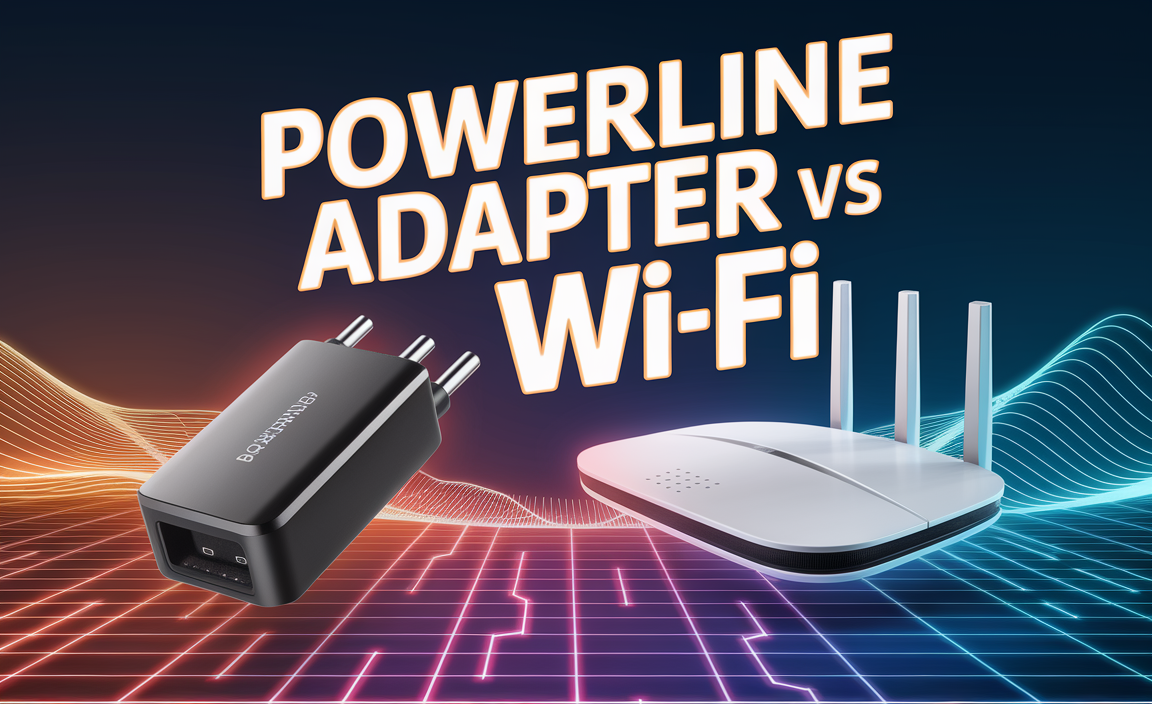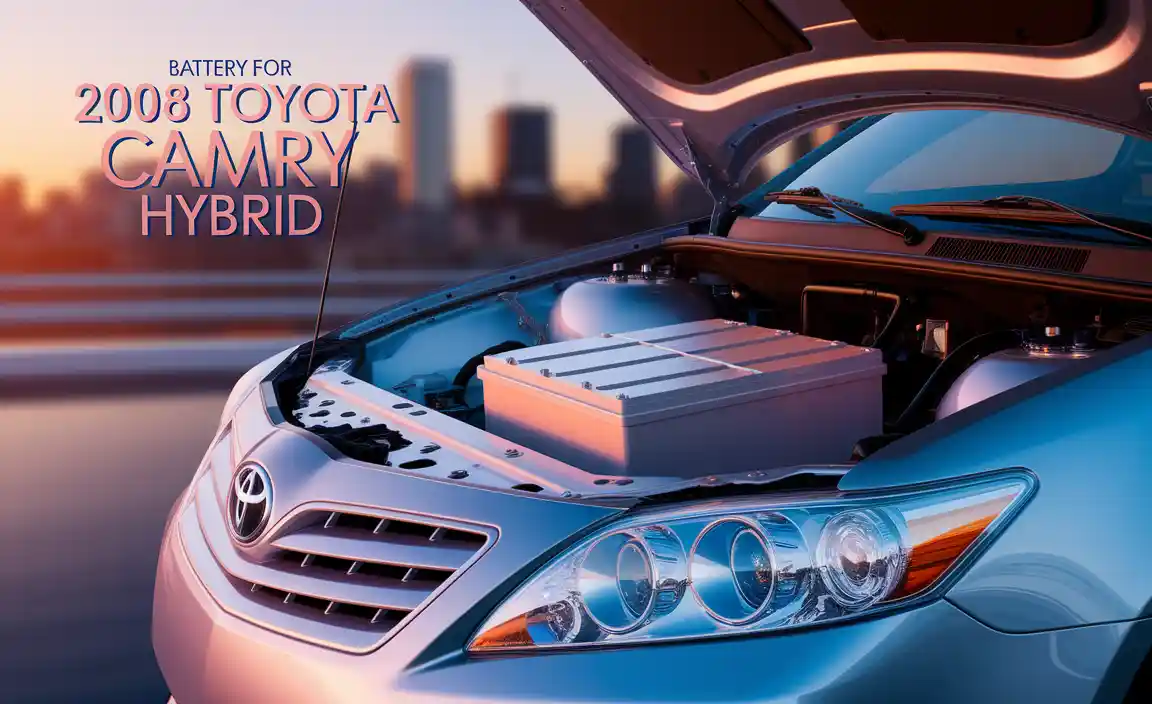Inverter with battery for home systems offer a smart way to save money on electricity bills by storing solar energy or cheaper off-peak grid power. This guide simplifies choosing and using one, making powered savings accessible for everyone.
Want to cut your electricity bills? Using an inverter with a battery for your home can be a real game-changer. It’s like having your own mini power plant that can store energy and use it when electricity prices are high, or even keep your lights on during a power outage. Figuring out how these systems work might seem complicated, but I’m here to break it down. We’ll explore how they save you money, what to look for, and how to get started. By the end of this, you’ll understand how this smart technology can put savings back in your pocket.
What is an Inverter with Battery for Home?
At its core, an inverter with battery for home is a system that helps you manage your electricity more effectively. Think of it as a smart energy hub for your house. It has two main parts: an inverter and a battery. The inverter’s job is to change the type of electricity your home uses. Most homes run on AC (alternating current), while solar panels and batteries produce or store DC (direct current). The inverter does this conversion.
The battery part is where you store energy. This could be electricity generated by solar panels during the day or cheaper electricity you buy from the grid during off-peak hours (when demand is low). This stored energy can then be used later, especially during peak hours when electricity rates are highest. This helps you avoid paying premium prices for your power.
These systems are often called Hybrid Solar Systems because they can work with both solar panels and the main electricity grid. They give you the flexibility to use solar power, stored battery power, or grid power, depending on what’s most cost-effective or needed.
Why Consider an Inverter with Battery for Your Home?
The biggest draw for most people is the potential for significant savings on their electricity bills. Here’s how it works:
- Reduce Peak Hour Costs: Electricity prices often jump during afternoons and evenings when everyone is using power. By using your stored battery energy from off-peak times or generated solar power, you bypass these high rates.
- Maximize Solar Panel Investment: If you have solar panels, an inverter with battery ensures you use as much of that free solar energy as possible. Instead of sending excess power back to the grid (often for a low rate), you store it for later use, effectively using more of your own generation.
- Energy Independence: These systems offer a degree of independence from the main power grid. You can store energy and use it even if the grid goes down, meaning your essential appliances can keep running.
- Environmental Benefits: By using stored solar power or potentially less energy from fossil-fuel-heavy grid sources during peak times, you’re contributing to a greener footprint.
How to Choose the Right Inverter with Battery System
Selecting the correct system is crucial for maximizing savings and ensuring it meets your household’s needs. Here are key factors to consider:
1. Your Energy Needs
The first step is understanding how much electricity your home uses. Look at your past electricity bills to find your average daily and monthly consumption in kilowatt-hours (kWh). Also, identify your peak usage times. This will help determine the size of the battery and inverter you’ll need.
2. Battery Capacity (kWh)
Battery capacity is measured in kilowatt-hours (kWh). This tells you how much energy the battery can store. Smaller batteries might only power essential devices during an outage, while larger ones can power your entire home for several hours.
- For backup power: Calculate the wattage of essential appliances (refrigerator, lights, modem, medical devices) and how long you’d want them to run.
- For bill savings: Consider your daily energy usage and when you have peak demand. A system that can cover your evening usage will be most effective.
3. Inverter Power Rating (kW)
The inverter’s power rating, measured in kilowatts (kW), indicates how much power it can deliver at any given moment. This needs to be high enough to handle the simultaneous use of multiple appliances. For example, if you plan to run a microwave (1.2kW) and a kettle (1.8kW) at the same time, your inverter needs to handle at least 3kW, plus some buffer.
4. Solar Compatibility
If you have or plan to install solar panels, ensure the inverter system is compatible with them. Most hybrid inverters are designed for this purpose, but it’s essential to confirm. Check if it supports the brand and type of solar panels you have.
5. Brand Reputation and Warranty
Investigate the manufacturer’s reputation. Look for brands known for reliability and good customer support. A solid warranty, typically 10 years or more for batteries, is a significant factor for long-term peace of mind and value.
6. Installation
While some components come pre-assembled, proper installation by a certified professional is usually required. This ensures safety, optimal performance, and can be a condition for warranties and any government incentives.
Types of Inverter-Battery Systems
There are a few main types of systems, each with its own advantages:
Hybrid Inverters
These are the most common and versatile. They manage power from solar panels, the battery, and the grid. They can store solar energy, use grid power at off-peak times, power your home, and provide backup during outages.
AC-Coupled Inverters
These systems are often added to existing solar power systems that don’t have battery storage. An AC-coupled battery system essentially acts as a dedicated energy storage unit that works alongside your existing solar setup and the grid.
DC-Coupled Inverters
Typically used with new solar installations, DC-coupled systems connect the battery directly to the solar panels and inverter. This can be more efficient as it avoids some DC-to-AC conversions, potentially leading to greater energy yield.
How an Inverter with Battery Saves You Money: A Deeper Look
Let’s dive deeper into the money-saving mechanisms. It’s all about smart energy arbitrage – buying or generating power when it’s cheap and using it when it’s expensive.
1. Time-of-Use (TOU) Rate Optimization
Many utility companies offer Time-of-Use pricing. This means electricity costs more during certain hours of the day (peak hours) and less during others (off-peak hours). An inverter with battery system allows you to:
- Charge the battery during off-peak hours: When electricity is cheapest, you can charge your battery from the grid.
- Use battery power during peak hours: When electricity prices are high, you discharge your stored energy, significantly reducing your reliance on expensive grid power.
Consider this scenario:
| Time of Day | Electricity Source | Cost Example |
|---|---|---|
| Morning (Off-Peak) | Grid to Battery | $0.15/kWh (charge rate) |
| Evening (Peak) | Battery Discharge | $0.40/kWh (avoided cost) |
| Overnight (Off-Peak) | Grid to Battery (if needed) | $0.15/kWh (charge rate) |
By charging at $0.15/kWh and using that energy when the grid rate is $0.40/kWh, you’re saving $0.25 for every kWh stored and used. Over months and years, this adds up dramatically.
2. Solar Self-Consumption Maximization
If you have solar panels, you generate a lot of free energy during sunny days. However, your home’s electricity usage might not always align with peak solar production. For instance, you might be at work while your panels are generating the most electricity.
Without a battery, excess solar energy is often sent back to the grid. For this excess power, you might receive a lower “feed-in tariff” than what you pay for electricity from the grid. A battery allows you to:
- Store excess solar energy: Instead of sending it back, you store it in your home battery system.
- Use stored solar energy later: You can then use this stored solar power in the evening or on cloudy days, further reducing your need to buy from the grid.
This increases your “self-consumption,” meaning you use more of the power you generate yourself, which is usually the most economical way to use solar energy.
For more information on solar energy and grid connection, the U.S. Department of Energy offers valuable resources on residential solar photovoltaics.
3. Demand Charge Management (for some homes/businesses)
While less common for strictly residential users, some commercial or larger residential setups might have “demand charges.” These are based on your highest rate of electricity usage during a billing period, not just total consumption. An inverter with battery can help by smoothing out these peaks, drawing power from the battery when demand is about to spike, thus lowering these demand charges.
Installation Process: What to Expect
Installing an inverter with a battery system is a job for qualified professionals. Here’s a simplified overview of what the process typically involves:
Site Assessment
A technician will visit your home to assess your existing electrical setup, your energy usage patterns, and the best location for the inverter and battery. They’ll also check if you have solar panels and their compatibility.
Equipment Selection
Based on the assessment, the installer will recommend the appropriate inverter and battery size. This is where your energy needs and budget come into play.
Mounting and Wiring
The inverter is usually mounted near your main electrical panel. Batteries can be installed indoors or outdoors, depending on the model and local regulations. Professionals will ensure all wiring is done safely and correctly, connecting to your solar panels (if applicable), the grid, and your home’s electrical system.
System Configuration and Commissioning
Once installed, the system needs to be configured. This involves setting up the smart controls to dictate when to charge from the grid, when to discharge, and how to prioritize energy sources. The installer will test the system to ensure it’s operating as expected.
Permits and Inspections
Depending on your location, permits and inspections may be required by your local authorities. Reputable installers will handle this process for you.
Safety First!
Working with electricity and batteries can be dangerous. Always hire certified professionals. They have the training and tools to handle this work safely. Attempting DIY installation without proper knowledge can lead to electrical hazards, damage to your home, and void your warranties. For electrical safety tips, resources like the National Fire Protection Association (NFPA) provide excellent guidance.
Maintenance and Longevity
Inverter and battery systems are designed to be low-maintenance, but a little care ensures they last longer and perform optimally.
Regular Monitoring
Most systems come with apps or online portals that allow you to monitor their performance, energy generation, and battery status. Keep an eye on these to spot any anomalies or performance dips.
Professional Checks
It’s a good idea to have your system checked by a professional every few years, or as recommended by the manufacturer. They can check connections, battery health, and software updates.
Keeping it Clean
Ensure the inverter unit is free from dust and debris, as overheating can reduce its efficiency and lifespan. Batteries also have optimal operating temperature ranges, so ensure they are installed in a suitable environment.
Battery Lifespan
Batteries have a finite lifespan, often measured in charge cycles or years. Most modern home batteries are designed to last 10-15 years or more. Understanding your battery’s warranty is key to knowing what’s covered.
Potential Drawbacks and What to Watch For
While the benefits are significant, it’s important to be aware of potential downsides:
- Initial Cost: The upfront investment for an inverter and battery system can be substantial. However, government incentives, rebates, and long-term savings can offset this cost over time.
- Space Requirements: Batteries, in particular, can take up space. Ensure you have a suitable location for them.
- Complexity: While we’re simplifying it, the technology is advanced. Choosing the right system and understanding its operation might still require some learning.
- Grid Dependence (for some features): Some systems rely on a grid connection to operate fully or to charge the battery from off-peak rates. If you’re seeking complete off-grid living, you’ll need a system specifically designed for that, often with larger battery banks and solar arrays.
- Changing Utility Rates: If your utility company changes its pricing structure, your savings strategy might need to be adjusted.
Cost-Saving Scenarios
Let’s look at some common scenarios where an inverter with battery shines:
Scenario 1: High Peak Hour Rates and Solar Afternoon Production
Your home uses a lot of electricity between 5 PM and 9 PM. Your solar panels produce most of their power between 12 PM and 4 PM. Without a battery, you export excess solar power during the day and buy expensive power in the evening. With a battery: You store that afternoon solar energy and use it to power your home in the evening, significantly reducing your electricity bill.
Scenario 2: Off-Peak Charging for Evening Use
You don’t have solar panels, but your utility offers very cheap overnight electricity rates. Your home’s highest usage is after dinner. With a battery: You set the system to charge fully from the grid overnight at the low rate. Then, you use that stored energy throughout the evening, avoiding high peak-hour grid prices.
Scenario 3: Essential Backup Power
You live in an area prone to power outages. You want to ensure your refrigerator, internet, and a few lights stay on. With a battery: The system automatically switches to battery power when the grid fails, keeping your essential appliances running until the grid power is restored. You can size the battery to meet these specific backup needs.
The Role of Solar: A Natural Partner
While you can use an inverter with a battery without solar panels (charging from off-peak grid rates), the savings and benefits are often amplified when paired with solar power. Solar panels provide a source of “free” energy during the day, which can then be stored to offset your evening energy costs or power your home during the day when you’re not consuming much.
The combination is powerful because it allows you to:
- Generate your own “fuel” (solar energy).
- Store that fuel when it’s abundant and free.
- Use that stored fuel when grid electricity is expensive or unavailable.
This synergy makes the inverter and battery system a cornerstone of modern, efficient home energy management when combined with solar.
Frequently Asked Questions (FAQ)
Q1: Can I install an inverter with a battery myself?
A: It is strongly recommended to have an inverter with battery system installed by a certified professional. These systems involve high voltage electricity, and improper installation can be dangerous, void warranties, and may not meet local electrical codes.
Q2: How long does a home battery typically last?
A: Most modern home batteries are designed to last 10 to 15 years or more. Battery lifespan is often measured in years or by the number of charge and discharge cycles it can endure. Always check the warranty details.
Q3: Do I need solar panels to use a home battery with an inverter?
A: No, you don’t strictly need solar panels. You can use a hybrid inverter system to charge the battery from the grid during off-peak hours (when electricity is cheaper) and then use that stored energy during peak hours to save money. However, pairing it with solar panels further enhances its cost-saving potential and energy independence.
Q4: What happens during a power outage?
A: Many inverter-battery systems are designed with backup power capabilities. When the grid loses power, the system automatically detects this and switches to drawing energy from your battery to keep your connected appliances running. You’ll need to ensure essential circuits are connected to the battery backup.
Q5: How much electricity can a typical home battery store?
A: Home battery capacities vary widely, typically ranging from 5 kWh to 20 kWh or more. A 10 kWh battery, for example, could power a few essential appliances for several hours, while a larger system could power more of your home for longer




